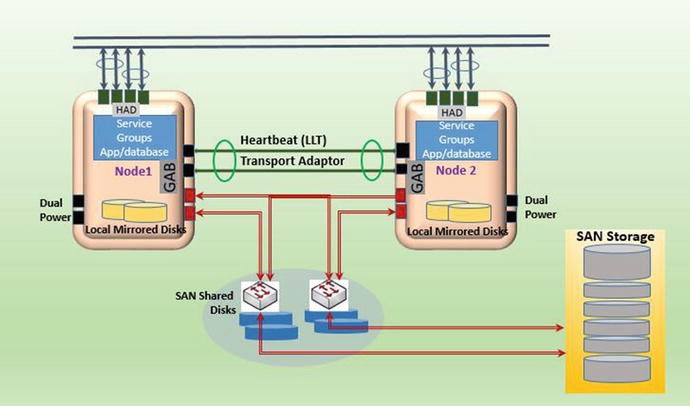You can use either the sanlun command, the iscsiadm command, or the iscsi command to view the LUNs configured on your Linux host. The examples in this section show the type of output you would see if you ran one of these commands on your Linux operating system in an environment running VxDMP .
The tool you use depends on your version of Linux and what you would like to view. The sanlun command displays the host device names and the LUNs to which they are mapped. The iscsiadm command lists the available storage systems and LUNs.

The following sections provide examples of the type of output you would see if you ran one of these commands in a specific environment; for example with iSCSI and DM-Multipath on Red Hat Enterprise Linux 5 series.
- FC running sanlun
- FC running vxdisk
- (Red Hat Linux) Software iSCSI running sanlun
- (SUSE Linux 10, 11) Software iSCSI running sanlun
- (Red Hat Linux) Software iSCSI running iscsiadm
- (SUSE Linux 10, 11) Software iSCSI running iscsiadm
You can use a third-party software such as Veritas Volume Manager to add the dynamic disk features to a Microsoft cluster infrastructure. Note By default, Windows 2000 Server and Windows Server 2003 don't support dynamic disks in a Microsoft Cluster Server (MSCS) environment. See Downloading the VERITAS Volume Manager Array Support Libraries for how to obtain the Array Software Library (ASL) that enables the VERITAS software to work with the Sun StorEdge 3310 SCSI array. Sun StorEdge Performance Suite (with Sun StorEdge QFS software) Sun StorEdge Availability Suite. The Library Manager is a software program that provides intelligent library control for StorageTek SCSI tape libraries, including the Timberwolf (97xx) libraries and the L Series libraries. The Library Manager’s management and control features include the ability to bring SCSI libraries online and offline.
Data ONTAP operating in 7-Mode with FC example of using sanlun to view LUNs
This example shows sample output from the sanlun lun show all command when it is issued in a Host Utilities environment that is running the Data ONTAP operating in 7-Mode with FC and Veritas Storage Foundation.
If you executed the sanlun lun show all command in a Data ONTAP operating in 7-Mode FC environment, you would get the following output:
FC example of using vxdisk to view LUNs
This example shows sample output from the vxdisk list command when it is issued in a Host Utilities environment that is running the FC protocol. The vxdisk list displays the LUNs on the VxVM disks:
Data ONTAP operating in 7-Mode with iSCSI example of using sanlun to view LUNs
This example shows sample output from the sanlun lun show all command when it is issued in a Host Utilities environment that is running the Data ONTAP operating in 7-Mode with iSCSI and Veritas Storage Foundation.

If you executed the sanlun lun show all command in a Data ONTAP operating in 7-Mode iSCSI environment, you would get the following output:
Veritas Software Scsi & Raid Devices Driver Download
(Red Hat Enterprise Linux 5) Software iSCSI example of using iscsiadm to view LUNs
This example shows sample output from the iscsiadm command when it is issued in a Host Utilities environment that is running the iSCSI protocol and Veritas Storage Foundation on a Red Hat Enterprise Linux 5 series system.
Veritas Software Scsi & Raid Devices Driver Updater
Veritas Software SCSI & RAID Devices Driver
(SUSE Linux 10, 11) Software iSCSI example of using iscsiadm command
This example shows sample output from the iscsiadm command when it is issued in a Host Utilities environment that is running the iSCSI protocol and Veritas Storage Foundation on a SUSE Linux Enterprise Server 10 or 11 system.
Part number: 215-08113_C0
September 2014
Veritas Software Scsi & Raid Devices Drivers

